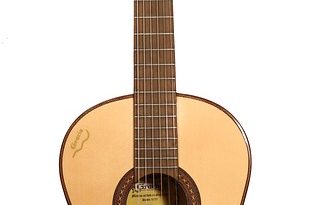Mastering Guitar Chords: A Comprehensive Guide to Playing in Any Key
Mastering Guitar Chords: A Comprehensive Guide to Playing in Any Key
As a guitarist, mastering chords is an essential skill that opens up countless possibilities for creating music in any genre or style. Whether you’re a beginner just learning the basics or an experienced player looking to expand your knowledge, understanding how chords work and how to play them in any key is key to becoming a versatile and skilled musician. In this comprehensive guide, we will cover everything you need to know to master guitar chords and play confidently in any key.
Understanding Chords
Before we dive into playing in different keys, it’s important to have a solid understanding of how chords are constructed and how they function within a musical context. A chord is a combination of three or more notes played simultaneously, typically consisting of a root note, a third, and a fifth. Chords are the building blocks of harmony and provide the harmonic foundation for a piece of music.
There are several different types of chords, including major, minor, diminished, and augmented chords, each with its own unique sound and function. Major chords have a bright and happy sound, while minor chords have a darker and more melancholic feel. Diminished chords are tense and dissonant, while augmented chords have a sense of longing and tension.
Playing in Any Key
Once you have a firm grasp of how chords are constructed and the different types of chords available, you can start learning how to play in different keys. Playing in different keys allows you to explore different tonalities and experiment with new sounds and textures. To play in a different key, you’ll need to understand how chords are related to each other and how to transpose them to different keys.
Transposing Chords
Transposing chords involves moving a chord progression from one key to another while maintaining the same chord relationships. For example, if you have a chord progression in the key of C major (C, F, G), you can transpose it to the key of G major by moving each chord up a fifth (G, C, D). Understanding how chords are related to each other and how to transpose them is essential for playing in different keys.
Common Chord Progressions
There are several common chord progressions that are used in a wide variety of musical genres. Learning these chord progressions can help you develop your understanding of how chords work together and how to play confidently in any key. Some common chord progressions include the I-IV-V progression, the I-VI-IV-V progression, and the II-V-I progression.
Practice Tips
Mastering guitar chords and playing confidently in any key takes time and practice. Here are some tips to help you improve your chord playing skills:
1. Practice regularly: Set aside dedicated time each day to practice your chord shapes and progressions. The more you practice, the more comfortable you will become with playing in different keys.
2. Learn new chord shapes: Experiment with different chord shapes and voicings to create new and interesting sounds. Learning new chord shapes will also help you expand your chord vocabulary and playing abilities.
3. Jam with others: Playing with other musicians is a great way to improve your chord playing skills and learn how to play in different keys. Jamming with others will help you develop your musical ear and sense of timing.
Conclusion
Mastering guitar chords and playing confidently in any key is a valuable skill that every guitarist should strive to achieve. By understanding how chords are constructed, how they function within a musical context, and how to play in different keys, you can become a versatile and skilled musician capable of creating music in any genre or style. So, pick up your guitar, practice regularly, and soon you’ll be able to confidently play in any key with ease.






